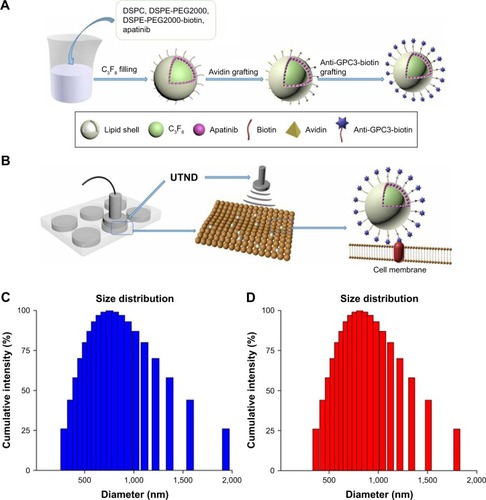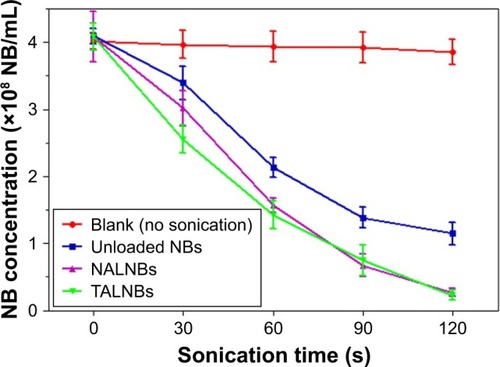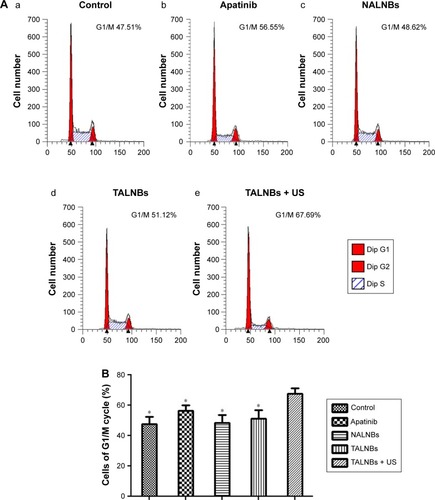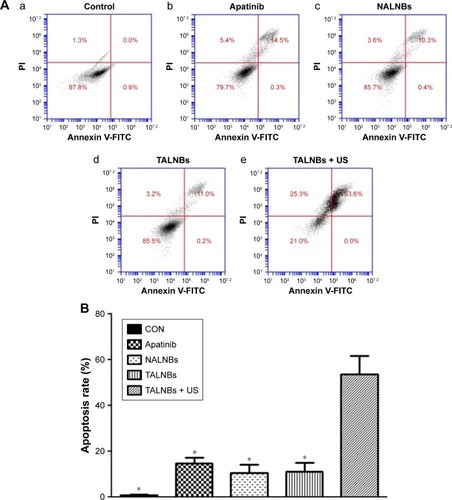Figures & data
Figure 1 Schematic diagram of TALNBs constructed for drug targeted delivery and particle size analysis.
Abbreviations: TALNBs, GPC3-targeted and apatinib-loaded nanobubbles; UTND, ultrasound-targeted nanobubble destruction; NALNBs, nontargeted and apatinib-loaded nanobubbles.

Figure 2 In vitro analysis of TALNBs.
Abbreviations: TALNBs, GPC3-targeted and apatinib-loaded nanobubbles; BALNBs, biotinylated apatinib-loaded nanobubbles; NALNBs, nontargeted and apatinib-loaded nanobubbles; FITC, fluorescein isothiocyanate; NBs, nanobubbles; BSALNBs, biotin–streptavidin and apatinib-loaded nanobubbles.

Table 1 Effects of drug loading on NB concentration, drug EE, and drug concentration of apatinib-loaded NBs
Figure 3 Ultrasonic destruction of TALNBs in the blank, unloaded NB, and NALNB groups.
Abbreviations: NB, nanobubble; TALNBs, GPC3-targeted and apatinib-loaded nanobubbles; NALNBs, nontargeted and apatinib-loaded nanobubbles.

Figure 4 Quantitative growth inhibition assay in HepG2 cells after different treatments.
Abbreviations: NALNBs, nontargeted and apatinib-loaded nanobubbles; TALNBs, GPC3-targeted and apatinib-loaded nanobubbles; US, ultrasound.

Figure 5 Flow cytometric analysis of the cell cycle in HepG2 cells after different treatments.
Abbreviations: Dip, diploid; NALNBs, nontargeted and apatinib-loaded nanobubbles; TALNBs, GPC3-targeted and apatinib-loaded nanobubbles; US, ultrasound.

Figure 6 Flow cytometric analysis of cell apoptosis in HepG2 cells.
Abbreviations: PI, propidium iodide; NALNBs, nontargeted and apatinib-loaded nanobubbles; TALNBs, GPC3-targeted and apatinib-loaded nanobubbles; US, ultrasound.

